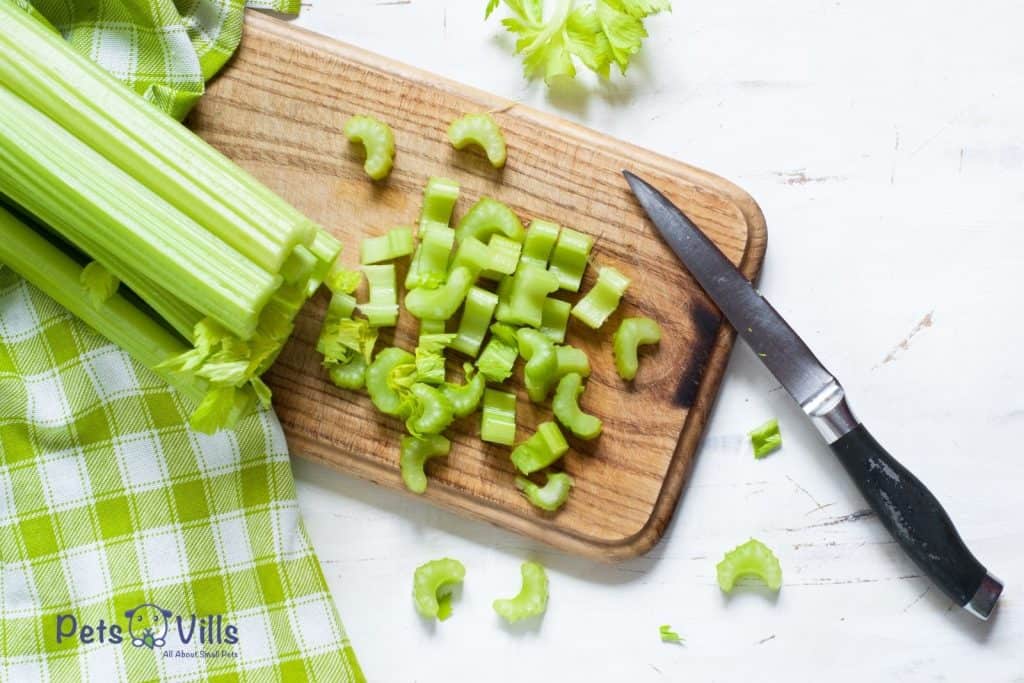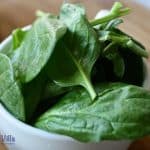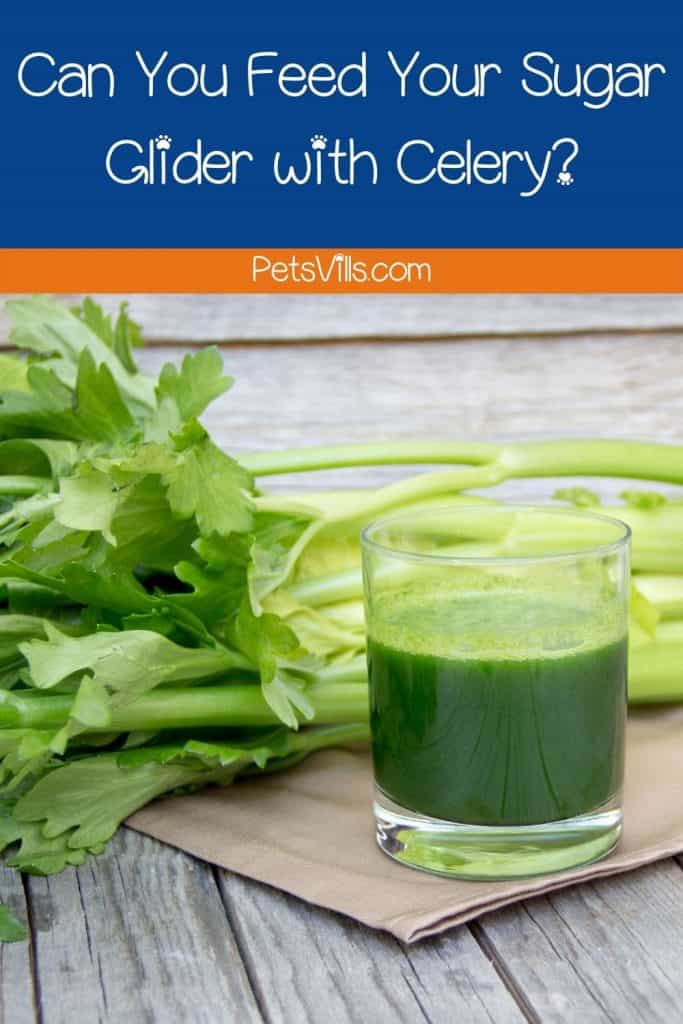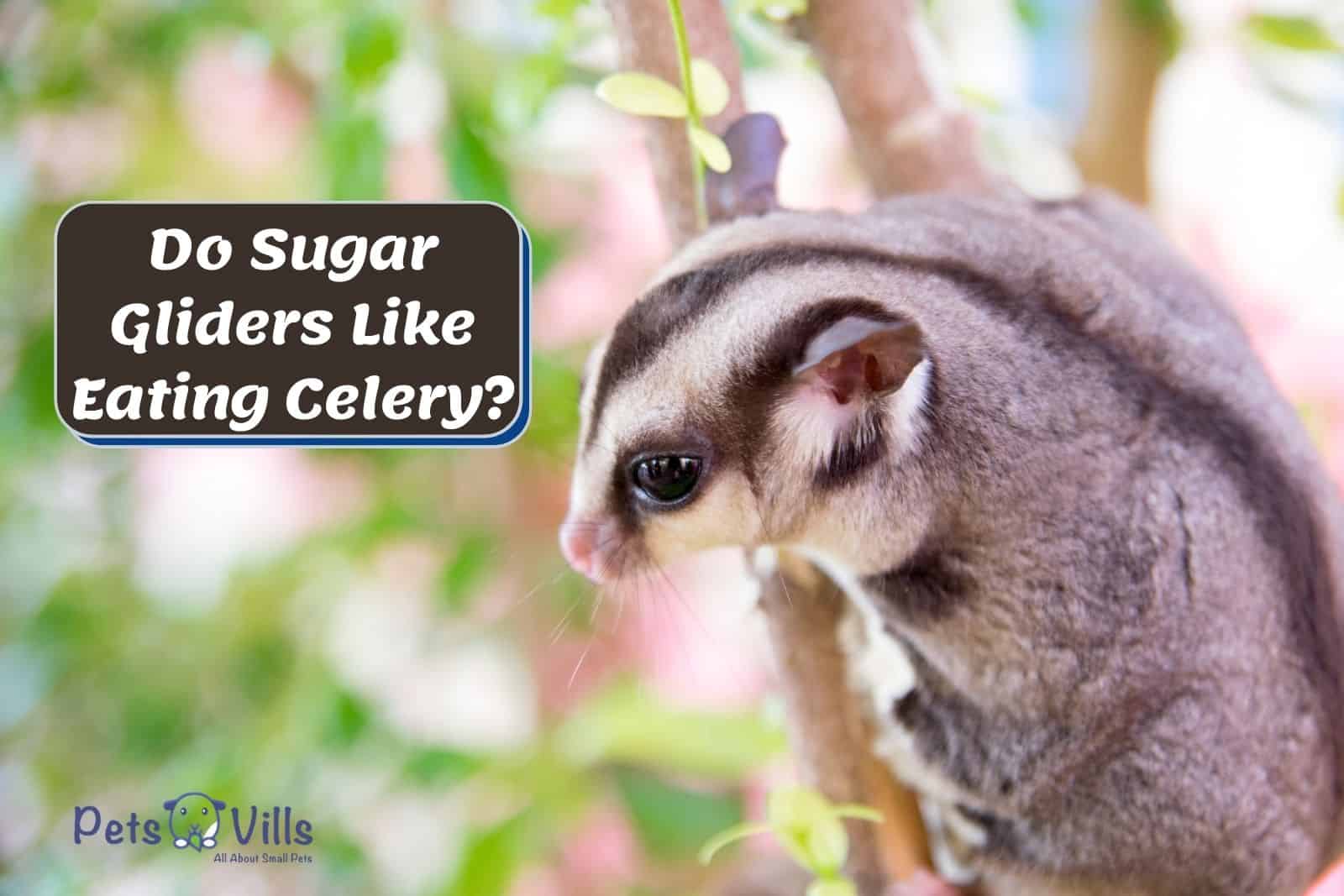Can sugar gliders eat celery?
Wondering if this vegetable and its leaves are healthy for your pet?
As a glider parent myself, I’ve wondered the same.
So I searched for RELIABLE answers from vets, and studies. I’m sharing them with you in this extensive guide!
Curious?
Read on to discover what I found
Table of Contents
Do Sugar Gliders Like Eating Celery?
Sugar gliders differ a lot from one another, and some of them can be picky eaters. Therefore, the only way to know if your glider likes eating celery is by feeding it to them.
Once you introduce your glider to celery, some might like it while others might not touch it.
If your pet glider avoids the celery stalks, it’s a sure sign that they don’t like it. To avoid wastage, you can eat it yourself.
Here’s a cute video about a sugar glider eating celery.
Can Sugar Gliders Have Celery?
Yes, Gliders can eat celery because the plant is nutritious and does not contain any harmful materials.
Celery mainly consists of water; therefore, it’s low in fat and calories. Because of this, your glider is not at risk of overfeeding.
Additionally, celery is important because it has antioxidants like beta carotene and vitamin C [1], which protect your sugar glider from inflammation and cover against DNA damage.
Celery is also a great source of fiber and contains 1.6g of fiber per 100g.
If you need food to help with digestion, celery is a good choice because it has a high fiber content [2]. This helps protects against digestive tract inflammation.
How about yogurt? Can sugar gliders eat yogurt?
How Much Sugar Is In Celery?

A cup of chopped celery contains 1 gram of sugar [3]. Celery has low sugar levels because it’s mostly made of water which has zero calories.
Therefore, if you feed your critter some celery, there’s a low risk of getting sick because most of it is nutritional content.
Your glider will be at a higher risk of sickness if the celery diet also contains other treats high in sugar content, such as canned fruit, chocolate, or candy.
Can Sugar Gliders Eat Celery Leaves?
You can feed the leaves to your sugar glider as long as they don’t contain any harmful substances. If your pet enjoys celery, it will eat them easily.
This video explains the benefits and side effects of celery.
In addition, you can serve the celery either raw, boiled, or steamed. You can choose the best form depending on what your sugar baby likes.
To find out the best form, you can try each method at different times and observe how your sugar glider feeds. If they prefer it raw, you can stick to that form.
When feeding your glider raw celery, ensure that you wash them properly to remove any chemicals. This is vital, especially if the celery is non-organic.
After washing, you can cut the celery into small pieces, whether you are feeding the glider the celery leaves or stalks to prevent choking.
Both plant parts are very nutritious, but they should not be fed whole because the stringy parts can also get stuck in their teeth.
The other option is steaming, which ensures that the celery does not lose the nutrients. Steamed vegetables have a higher antioxidant content [4]; therefore, it’s better than boiling.
On the other hand, shuggie prefer to eat dry, raw food. Therefore, if you can’t steam them, you can just serve them raw.
Celery For Sugar Gliders: Things To Consider

In general, gliders are omnivores, so they can eat a mixture of fruit, vegetables, insects, meat, and nuts.
How Often Can Sugar Gliders Eat Celery?
You should not feed your little marsupial celery daily. This plant should be treated as an occasional treat and offered as part of a mixture with other fruits and fresh vegetables.
Celery should not replace the glider’s main well-balanced diet. They still need to eat protein and other nutrients that are present in other food sources.
ALSO READ: Can Sugar Gliders Eat Grape Tomatoes?
How Much Celery Can Sugar Glider Eat?

A glider’s ideal diet is composed of 25% fruits and vegetables.
Therefore, when adding celery to the diet, it should not take up 25% of the daily meal; the food should include other fresh fruits and vegetables
To ensure the quantities are correct, you need to monitor the intake and avoid giving them a lot of celery in one sitting.
According to experts [5] from the NC State Veterinary Hospital Exotic Animal Medicine Department, every adult sugar glider needs about 15 to 20% of their body weight pelleted food.
They say, “ Greens are very important to a sugar glider’s diet…if your pet is not accustomed to eating greens, you should introduce them slowly to prevent diarrhea”.
Apart from the celery, they also need the protein from insects and meat to boost their calcium levels. This can also be sourced from live insects.
FAQs
Can Sugar Gliders Eat Raw Celery?

Yes, gliders can eat raw celery as part of their diet.
What Vegetables Are Harmful To Sugar Gliders?
You should avoid food high in oxalates, such as spinach, collard greens, or kale because they impair calcium absorption.
What Raw Vegetables Can sugar Gliders Eat?

You can also feed your sugar glider other raw vegetables, including asparagus, broccoli, cucumbers, red cabbage, beets, black-eyed peas, dandelion, and carrots.
Can Sugar Gliders Have Radishes?
Yes, pet glider can eat radishes in moderation. The best option is fresh or frozen radishes.
What Is Toxic For Sugar Gliders?

Vegetables such as Brussels sprouts, leeks, lettuce, collard greens, kale, spinach, onions, turnips, garlic, and onions are potentially toxic.
How Many Times A Day Should You Feed Sugar Gliders?
You should feed your glider about two times every day, in the morning and at dusk. Ensure that you feed them at night because they are nocturnal; they need to eat mostly at night.
Conclusion
Sugar gliders can comfortably eat celery because they are safe and nutritious. However, they need to be introduced in moderation.
You can serve the celery either in raw form, steamed, or boiled. The raw celery has high nutritional content, while the steamed vegetables come with high levels of antioxidants.
Keep in mind that celery is a snack; therefore, you should not serve it to your sugar glider every day. Your pet still needs other nutrients, such as proteins sourced from other foods.
Next time you buy some celery for your kitchen, spare some for your sugar glider because it’s safe and non-toxic.

Now that you know the benefits of feeding your sugar glider with celery, will you let them try it out just to see if they’ll like it? Let us know down below!
References
- 1. Timmons J. Benefits of Celery: For Your Health [Internet]. Healthline. 2016. Available from: https://www.healthline.com/health/food-nutrition/health-benefits-of-celery#1.-Celery-is-a-great-source-of-important-antioxidants.
- 2. Szalay J. Celery: Health Benefits & Nutrition Facts [Internet]. livescience.com. Live Science; 2015. Available from: https://www.livescience.com/50640-celery-nutrition.html
- 3. Brennan D. Health Benefits of Celery [Internet]. WebMD. 2020. Available from: https://www.webmd.com/diet/health-benefits-celery
- 4. Brady A. Nutritional Content of Steamed Vegetables vs. Raw [Internet]. Our Everyday Life. Available from: https://oureverydaylife.com/538874-nutritional-content-of-steamed-vegetables-vs-raw.html
- 5. NC State Veterinary Hospital Exotic Animal Medicine Department. Caring for Your Pet Sugar Glider [Internet]. Available from: https://cvm.ncsu.edu/wp-content/uploads/2016/12/Caring-for-your-Sugar-Glider.pdf

My name is Ben Roberts, and I absolutely love animals. So, naturally, I love writing about them too! As far as my animals, I have a Pit-bull, a Beagle-lab mix, a Chihuahua, and one old cat. Each one of them provides me with a new adventure every day. And the best part is they’re all best friends. Well, except the cat when he gets a little annoyed.
FIND HIM ON: FACEBOOK and TWITTER.
Read his latest ARTICLES
Learn more about Benhere




![Cute Sugar Glider Drinking From The Bottle [Must-Watch Video]](https://petsvills.com/wp-content/uploads/2022/09/Cute-Sugar-Glider-Drinking-From-The-Bottle-Must-Watch-Video-211x150.jpg)
